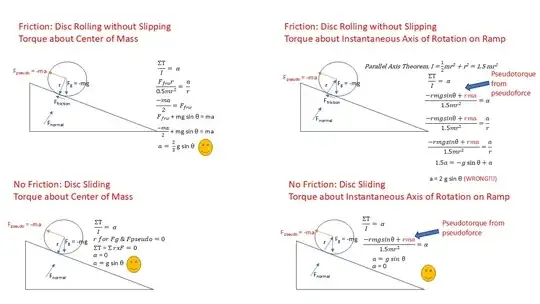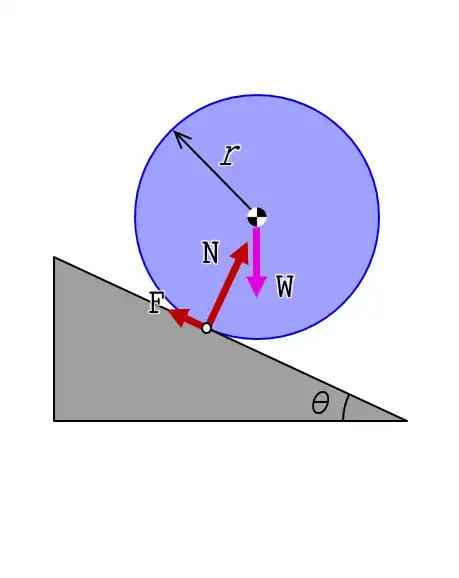I have been trying to understand torque around the instantaneous axis of rotation of rigid bodies rolling without slipping down an incline. This instantaneous axis is at the point of contact between the rolling object and the incline.
Several other threads in this stackexchange have discussed how the related scenario of an object sliding without friction doesn't rotate because of the cancellation of torques from gravity and pseudotorque from the non-inertial frame, both acting around the instantaneous axis of rotation.
However, when I try to calculate the acceleration of a rolling disc down an incline using a similar approach, I fail to get the correct expression of acceleration = (2/3) g sin theta. Instead I am calculating 2 g sin theta.
I put together a set of force diagrams for four scenarios in a 2x2 matrix (no friction vs friction, torque around c.o.m. vs torque around instantaneous axis of rotation).
I'd really appreciate any feedback about the error in my approach or misunderstanding of how/when to use pseudoforces and pseudotorques. I've read through a number of other threads in this forum and there was one extended discussion where this issue was raised but without the counterexample diagrams that I am including. Ball Rolling Down An Inclined Plane - Where does the torque come from?
(I thought that I understood the convenience of choosing an axis that coincides with the center of mass so that the non-inertial pseudoforces don't influence torque since they effectively act at the c.o.m. with a radius of 0. I also thought that I understood that the angular acceleration in the c.o.m. frame will be the same in the laboratory frame, and that the tangential acceleration in the c.o.m. frame represents the linear translational acceleration in the laboratory frame.)

